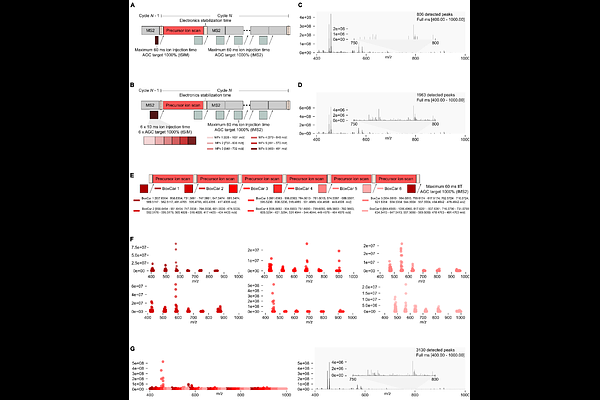Improving proteomic dynamic range with Multiple Accumulation Precursor Mass Spectrometry (MAP-MS)

Improving proteomic dynamic range with Multiple Accumulation Precursor Mass Spectrometry (MAP-MS)
Phlairaharn, T.; Shannon, A. E.; Zeng, X.; Truong, D.-J. J.; Schoof, E. M.; Ye, Z.; Searle, B. C.
AbstractOrbitrap (OT) -based mass spectrometer platforms are a gold standard in high-resolution mass spectrometry, where their primary disadvantage is slower-scanning speed in comparison to time-of-flight or linear ion trap mass analyzers. In this study, we utilize long OT transients to extend the precursor dynamic range by modifying the selected ion monitoring method to multiplex several precursor m/z ranges from 400 to 1000 m/z into a single scan called \"Multiple Accumulation Precursor Mass Spectrometry\" (MAP-MS). Our approach requires no software or hardware modifications and hides the additional ion accumulation steps during the time it takes to make other Orbitrap measurements, producing precursor spectra with nearly 2x dynamic range and essentially no consequences. We collected data using both data-dependent acquisition (DDA) and data-independent acquisition (DIA) methods to evaluate a range of approaches. With DDA, MAP-MS precursor quantification improves with higher quality measurements. At the same time, DIA detection is enhanced by up to 11% when combining precursor and tandem mass spectra for peptide detection.